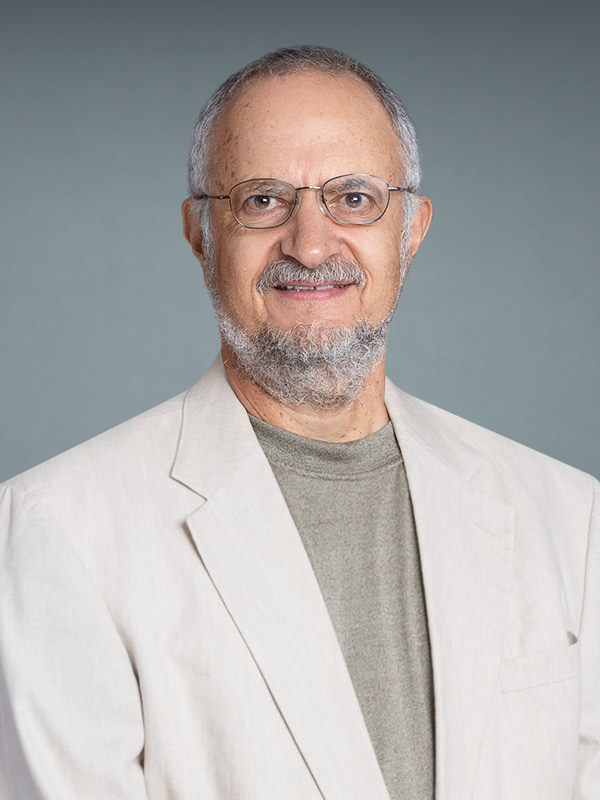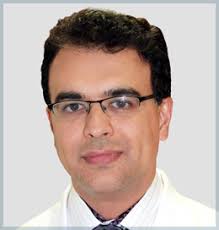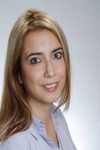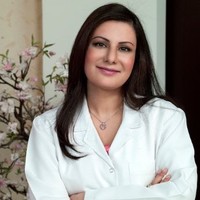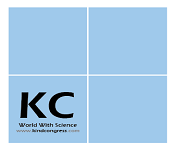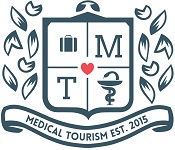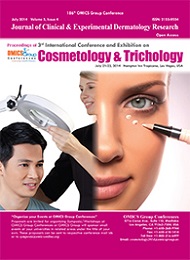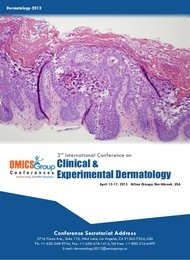Theme: Shielding Skin & Body with the advancement in Dermatology
Skin Body 2019
Join us for 2nd International Dermatology Conference: Skin & Body
Update your skills, enhance your knowledge base, and broaden your horizons- all in one place!
Date: November 21-22, 2019
Venue: Bali, Indonesia
Skin Body 2019 welcomes all the attendees, speakers, sponsor’s and other research expertise from all over the world to the 2nd International Dermatology Conference: Skin and Body which is going to be held during November 21-22, 2019 in Bali, Indonesia.
We are very much honoured to invite you all to exchange and share your views and experience on the “Shielding Skin & Body with the advancement in Dermatology”.
Skin Body 2019 will bring together world-class personalities working on Dermatology, Cosmetology, Trichology, Psoriasis, Surgical Dermatology, Eczema, Melanoma, Vitiligo, Acne, Anti-Aging and other Dermatological diseases.
ME Conferences organizes 1000+ Global Events Every Year across USA, Europe & Asia with support from 1000 more scientific societies and Publishes 700+ Open access journals which contains over 100000 eminent personalities, reputed scientists as editorial board and organizing committee members.
Why to attend 2nd International Dermatology Conference: Skin & Body:
This event will focus on latest research on different topics like Dermatologists, Cosmetologists, Trichologists, Plastic Surgeons, Physicians. Skin Body 2019 invites you for Keynote talks, plenary talks, symposium, workshops, invited sessions and oral and poster sessions from various universities and associations. This will be the best opportunity to outreach the large gathering of participants from all around the world and get name recognition at this two-day event. World-eminent speakers, most recent researches, latest techniques and the advanced technologies in dermatology & Cosmetology using are the principal features of this conference.
Target Audience 2nd International Dermatology Conference: Skin & Body:
-
Dermatologists
-
Physicians
-
Cosmetologists
-
Trichologists
-
Professors
-
Surgeons
-
Researchers
-
Scientists
-
Directors
-
Entrepreneurs
-
Business delegates
-
Associations and Societies
-
Beauticians and Spa professionals
-
Pharmaceutical Companies
-
Healthcare Industries
-
Yoga & Fitness trainers
Track 1: Clinical Dermatology & its Therapies
Clinical Dermatology consists of the evaluation and treatment of skin conditions and skin disease. Redding Derm’s high level clinical dermatology competence is of great comfort to patients of all ages seeking diagnosis and treatment of common or rare skin conditions.
Specialty of medicinal science that encompasses the complete range of diseases and conditions of the skin, hair and nails. Skin protects the body fights against infection maintains shelter for blood vessels and sweat glands that regulate temperature shields from damaging ultraviolet radiation and harmful environmental chemicals and toxins and also alerts the brain to sensitive touch smells and impending pain. It also reflects many emotions such as growing pale and blushing. Healthy hair is considered to be one of our most important and a desired feature which is comprised of keratin a lifeless substance which protects skin, warms the body, and brows/lashes keep dirt and particles from injuring the eyes. Nails are also comprised of keratin. Several nail funguses and infections can be caused by inadequate hand washing, unsanitary manicures and pedicures, improper nail trimming and even tight shoes. Diseases such as diabetes and treatments for cancer can harm the nails.
Track 2: Pediatric Dermatology
A Pediatric dermatologist cares for kids (newborns through adolescents) with skin disorders. Pediatric dermatologists treat kids within the patient clinic setting, however may additionally take care of hospitalized patients. Many perform surgical procedures like laser therapy and cutaneous surgery. If your kid features a skin condition, like a mar, eczema, warts, or skin disease, a medical specialty specialist has the expertise and qualifications to treat your kid. Pediatric dermatologists treat a large sort of medical specialty skin conditions victimisation the newest obtainable treatment strategies. Pediatric dermatologists treat children from birth through adolescence.
Track 3: Cutaneous Conditions
Human skin is the largest organ of the body. Together with various other components such as glands, fingernails, and hair, it comprises a complex system known as the integumentary system. Cutaneous biology is the study of cellular and molecular biology of human skin and its associated diseases. Human skin performs a number of diverse functions critical to normal human health, including protection from environmental insults such as pathogens, physical damage, and radiation from the sun.
Any medical condition that affects the organ system that encloses the body and includes skin, hair, nails, and related muscle and glands. The major function of this system acts as a barrier against the external environment. The two main types of human skin are: glabrous skin, the hairless skin on the palms and soles the other is hair-bearing skin. Within the latter type, the hairs occur in structures called pilosebaceous units each with hair follicle, sebaceous gland, and associated arrector pili muscle. The epidermis is the most superficial layer of skin a squamous epithelium with several strata. The dermis is the layer of skin between the epidermis and subcutaneous tissue, and comprises two sections the papillary dermis and the reticular dermis. The subcutaneous tissue is a layer of fat between the dermis and underlying fascia.
Track 4: Plastic and Cosmetic Surgery
Plastic Surgery:
Plastic surgery is a surgical specialty involving the restoration, reconstruction, or alteration of the human body. It can be divided into two categories. The first is surgical process which has craniofacial surgery, hand surgery, surgery, and therefore the treatment of burns. The other is cosmetic or aesthetic surgery. While surgical process aims to reconstruct a part of the body or improve its functioning, lift aims at up the looks of it. Both of those techniques are used throughout the world.
Cosmetic Surgery:
Cosmetic dermatology is a specialty of medication concerned to treat the skin, hair, or nails employing a treatment that's meant to enhance a patient's look instead of treating illness. Examples of treatments dermatologists perform that fall under the world of cosmetic dermatology include: surgery to diminish skin condition scars, injecting fillers associated Clostridium botulinum toxins to relinquish an aging face a younger look, laser surgery to diminish or take away tiny veins, age spots, tattoos, or wrinkles.
Track 5: Anti-Aging Treatment
Skin aging will either be due to external and internal factors. With age, the metabolism decreases on a cellular level, and replenishing of skin cells slows down that decreases the firmness of skin structure. External factors like the growing exposure to sun, dust, pollution, smoking, etc. can also create premature aging by dehydrating the skin and increasing the amount of free radicals within the skin. These free radicals injury essential skin parts and cause fine lines, wrinkles, and dullness. Skin aging will gift as fine lines, wrinkles, dullness, modification in color, texture, etc.
Anti-aging treatments at a skin clinic will assist you to travel back in time and see the greener grass on the opposite aspect. Such treatments aim at decreasing the signs of aging and rejuvenating the skin cells in order that the general look of the skin is remodeled to a healthy, immature and resilient state.
Track 6: Acne & Scar Pigmentation
Post-inflammatory hyperpigmentation (PIH), the dark spots or red spots that are left when disease of the skin lesions heal, develops once the inflammation inherent in disease of the skin lesions causes skin cells to provide a lot of melanin, the pigment that offers skin its color. An accrued quantity of animal pigment makes the skin seem darker. Hyperpigmentation scars are the results of several things. For instance, they have a tendency to occur when breaking the skin lesions or chicken pox. Once the initial lesion has cured, it will leave behind a dark spot on the skin, which can seem like a scar or acne. Thankfully, it isn't a scar, however it will take up to a year to fade out on its own that is why many of us would like to get rid of physiological state scars using other means to speed up the process.
Track 7: Aesthetic Medicine
Aesthetic Medicine is a developing clinical subspecialty and field in scientific research aimed at the use of minimally invasive cosmetic treatments to enhance patients' satisfaction with their physical appearance. This subspecialty is no longer limited to the fields of plastic surgery and dermatology, as many specialties are offering aesthetic medical procedures in order to better accommodate their patients aesthetic needs. A growing trend among baby boomers is that aesthetic treatments are part of a normal health routine with the goal of maintaining a natural and healthy appearance.
Track 8: Psoriasis
Psoriasis is a long-lasting autoimmune disease characterized by patches of abnormal skin which are typically red, itchy, and scaly. There are five main types of psoriasis: plaque, guttate, inverse, pustular, and erythrodermic, whereas plaque psoriasis, also known as psoriasis vulgaris. Psoriasis is generally thought to be a genetic disease that is mainly caused by environmental factors. Plaque psoriasis typically appears as raised areas of inflamed skin covered with silvery-white scaly skin. These areas are called plaques and are most commonly found on the elbows, knees, scalp, and back. Psoriasis is characterized by an abnormally excessive and rapid growth of the epidermal layer of the skin. Abnormal production of skin cells and an overabundance of skin cells result from the sequence of pathological events in psoriasis. Psoriasis is generally thought to be a genetic disease that is triggered by environmental factors. There is no cure for psoriasis however various treatments can help control the symptoms. These treatments include steroid creams, vitamin D3 cream, ultraviolet light and immune system suppressing medications, such as methotrexate.
Track 9: Leprosy and Vitiligo
Vitiligo:
Vitiligo is a long term skin condition characterized by patches of the skin losing their pigment. The patches of skin affected become white and usually have sharp margins in which hair from the skin of mouth and nose may also become white. Most often the patches begin on areas of skin that are exposed to the sun and are more noticeable in people with dark skin. Vitiligo may result in psychological stress. There is no known cure for vitiligo and for those with light skin sunscreen and makeup are typically recommended. Other treatment options may include steroid creams or phototherapy to darken the light patches.
Leprosy:
Leprosy which is also known as Hansen’s disease is a long-term infection by the bacteria. At the beginning stage infections occur without any symptoms and these typically remain for 5 to 20 years. Leprosy is a contagious disease which spreads between people through a cough or contact with fluid from the nose of an infected person. Leprosy could be detected by acid-fast bacilli in a skin biopsy or by detecting the DNA which is curable with a treatment known as multidrug therapy. Although the number of new leprosy cases occurring each year is important as a measure of transmission, it is difficult to measure due to leprosy's long incubation period, delays in diagnosis after once the disease is attacked, and the lack of laboratory tools to detect it in the very early stages. Multidrug therapy (MDT) remains highly effective and people could not be infected after the first monthly dose.
Track 10: Keloid and Pityriasis rosea
Keloid:
Keloid scars are defined as abnormal scars that grow beyond the boundary of the original site of a skin injury. The scar is a raised and ill-defined growth of skin in the area of damaged skin. A keloid (key-loid) is a type of raised scar. Unlike other raised scars, keloids grow much larger than the wound that caused the scar. In very rare cases, keloids form when people do not injure their skin. These are called “spontaneous keloids.” A keloid usually takes time to appear. After an injury, months can pass before this scar appears. A keloid can also form more quickly.
Pityriasis rosea:
Pityriasis rosea is a medical condition that causes red rashes on the skin. It’s fairly common and usually doesn’t lead to severe complications beyond the presence of the rash. Pityriasis rosea is a type of skin rash. Classically, it begins with a single red and slightly scaly area known as a "herald patch". This is then followed, days to weeks later, by a pink whole body rash. It typically lasts less than three months and goes away without treatment. Sometime a fever may occur before the start of the rash or itchiness may be present, but often there are few other symptoms. While the cause is not entirely clear, it is believed to be related to human herpesvirus 6 (HHV6) or human herpesvirus 7 (HHV7). It does not appear to be contagious. Certain medications may result in a similar rash. Diagnosis is based on the symptoms.
Track 11: Skin Burns and related Skin Cancers
Sunburn is a clear sign that the DNA in your skin cells has been broken by an excessive amount of ultraviolet light radiation. Getting sunburn, only once each two years, will triple your risk of skin cancer carcinoma. Sunburn doesn’t need to be raw, peeling or blistering. If your skin has gone pink or red within the sun, it’s sunburnt. For individuals with darker skin, it should simply feel irritated, tender or fidgety. Burns are one of the most common injuries, particularly among youngsters. The term “burn” means that over the burning sensation related to this injury. Burns area unit characterised by severe skin harm that causes the affected skin cells to die. Most people will live through burns while not serious health consequences, reckoning on the cause and degree of injury. More serious burns need immediate emergency medical aid to forestall complications and death.
Track 12: Fungal & Bacterial Infections of Skin
Bacterial skin infections:
The skin is that the body's initial barrier against bacteria that cause infections. Even though several bacteria live on the surface of our skin, healthy skin will typically protect us from infection. Bacterial skin infections can affect a small spot or may spread, affecting a large area. They can vary from a treatable infection to a severe skin condition. Many types of bacterial skin infections need clinical care by a physician or different health care skilled. Bacterial skin infections usually begin as tiny, red bumps that slowly increase in size. Some microorganism infections are gentle and simply treated with topical antibiotics, however different infections need an oral antibiotic.
Fungal skin infections:
Fungal infections of the skin are quite common and include athlete’s foot, jock itch, ringworm, and yeast infections. These kinds of skin infections are caused by a fungus and are possibly to develop in damp areas of the body, like the feet or cavum. Some fungous infections aren’t contagious, and these infections are generally non-life-threatening.
Track 13: Trichology and Hair Transplantation
Trichology is that the branch of medicine that deals with the scientific study of the health of hair and scalp. Trichologists are hair and scalp specialists (one style of skin specialist) who diagnose the causes of hair fall, hair breakage, hair dilution, shrinking of hairs, diseases of the scalp, and treat according to cause. Hair transplantation is a surgery that moves hair and hair follicles from a part of your body called the donor site to the bald or hairless part referred to as the recipient site. It is finished the assistance of a surgical knife or punch graft instrument. The removed hair strands from one a part of body are placed into little holes of the bald scalp. Hair transplantation is either done by follicular unit extraction (FUE) or follicular unit transplant (FUT) technique.
Track 14: Laser Treatment Trends
Laser resurfacing is a treatment to reduce facial wrinkles and skin irregularities, like blemishes or acne scars. The technique directs short, concentrated pulsating beams of light at irregular skin, precisely removing skin layer by layer. This popular procedure is also called lasabrasion, laser peel, or laser vaporization. Laser skin resurfacing removes skin layer by layer with precision. The new skin cells that form during healing give the skin a tighter, younger looking surface. The procedure can be done alone or with other cosmetic surgeries on the face. During the laser skin resurfacing procedure a laser is used to dissolve the molecular bonds of the damaged skin cells layer by layer until a smoother, more uniform skin appearance is achieved. The procedure may also be referred to as laser skin rejuvenation because of its anti-aging benefits, or laser peel because the damaged layers of skin are peeled away.
Track 15: Natural Approaches to Skin & Hair
Herbal and Ayurveda products have an intermediate link between health and beauty care. The herbal product provides a natural and safe way to handle skin and body. Ayurvedic is also known as Ayurveda. It was developed thousands of years ago in India. Ayurvedic medicine is to promote good health through herbal and Natural Products. Ayurvedic treatment is non-invasive and non-toxic, so it can be used safely as an alternative therapy or alongside conventional therapies. Ayurvedic medicine is to market physiological condition through flavoring and Natural product. These products contain properties that are important for nutrient dry skin, leveling oily skin, caring for the sensitive skin of babies and healing of skin and scalp issues. Therefore it is used safely as an alternate medical aid or along-side standard therapies. Ayurveda has been used to treat the skin condition, allergies, asthma, anxiety, arthritis, colds, constipation, depression, flu, heart disease, high-pressure level, immune problems, inflammation, insomnia, nervous disorders, diabetes & obesity, skin problems, and ulcers.
Track 16: Prevention & Treatment of Skin & Body
There are many alternative ways that to decrease the probabilities of developing a skin infection. Frequent hand cleansing is one of the simplest ways to prevent. Skin infections will vary from gentle to severe. Treatment depends on the cause of the infection and the severity. Some forms of agent skin infections will improve on their own, among days or weeks. Certain skin disorders are not preventable, including genetic conditions and a few skin issues because of different sicknesses. However, it is possible to prevent some skin disorders. Bacterial infections are typically treated with topical antibiotics applied on to the skin or with oral antibiotics. We can conjointly use antifungal sprays and creams to treat plant skin infections and medicated creams to treat parasitic skin infections. Non-infectious skin disorders, like skin disease and atopic eczema, are generally preventable. Prevention techniques vary depending on the condition. Here are some tips for preventing some non-infectious skin disorders.
Track 17: Skin Rejuvenation & Resurfacing Therapy
Photorejuvenation is a skin treatment that uses lasers, intense pulsed light, or photodynamic therapy to treat skin conditions and remove effects of photoaging such as wrinkles, spots, and textures. The process induces controlled wounds on the skin, prompting it to heal itself by creating new cells. This process reverses the signs of photoaging to a certain extent by removing appearances of damage.
Laser resurfacing is a laser surgery technique that disassociates molecular bonds. It is used for the treatment of wrinkles, solar lentigenes, sun damage, scarring (acne scars and surgical scars), stretch marks, actinic keratosis, and telangiectasias. It can be combined with liposuction to help tighten and smooth over the new contours after removal of excess fat. Resurfacing can be ablative, which vaporizes tissue and creates wounds, or non-ablative which keeps the skin intact. When compared to a chemical peel, dermabrasion or other forms of treatment, a laser allows the surgeon to customize the surgery not only for each patient but also to each area of the face.
Track 18: Stem Cell Therapy on Skin
Skin stem cells are involved in the process of skin repair. Stem/progenitor cells of the epidermis are recognized to play the most essential role in the tissue regeneration of skin. Among all the distinct skin stem cell subgroups, epidermal stem cells are the ones most deeply correlated to tissue repair and skin regeneration. "Stem cells of human beings have enormous capacity to repair and replenish old worn out cells. When these cells are introduced in the facial skin and other areas, they can yield great results. Sagging skin gets replaced with firm and bouncy skin in no time. We have seen that fine lines, age spots, wrinkles, start diminishing and in some cases the signs eventually disappear. Most epidermal stem cells reside in the basal layer of epidermis, some might also be found in the bulge region of the hair follicle and the base of the sebaceous glands.
Track 19: Skin Care & Nutritious Diet
Your skin is the largest organ of your body. And its health is easily influenced by what you eat. Skin goes through many cycles of renewal and repair. Proper nutrition supplies your skin with the materials it needs to maintain its beauty and strength. Human skin is continuously exposed to internal and external influences that may alter its condition and functioning. As a consequence, the skin may undergo alterations leading to photoaging, inflammation, immune dysfunction, imbalanced epidermal homeostasis, or other skin disorders. Modern nutritional science is developing new insights into the relation between food intake and health, and effects of food ingredients may prove to be biologically relevant for optimal skin condition.
Summary of Skin and Body Conference:
Annually Skin Diseases and Infections continue to strike and increase in magnitude, complexity, frequency and economic impact. At the same time, awareness of the process and potential benefits of disaster reduction is still confined to specialized circles. The Science of Skin and Body Care is playing an important role to create awareness among people and providing a platform to share and discuss on different types of Skin infections, Plastic Surgery and Cosmetic laser treatments with new Aesthetic Devices in the market. As blemishes and wrinkles are very common skin problems and there are thousands of conditions that can affect the skin and also some cause mild symptoms. As Acne is the most commonly diagnosed skin condition, although many people use over-the-counter treatments and home remedies it is time to share ones views and knowledge and we are organizing the series of "2nd International Dermatology Conference: Skin and Body”.
Importance & Scope of 2nd International Dermatology Conference: Skin and Body:
Skin Body 2019 will provide a forum dealing with the skin, nails, hair and its diseases. Dermatology is mainly meant to improve person’s appearance by reducing or eliminating imperfections. This conference will bring expertise together from international wide to enable the sharing of knowledge, symposiums and strengthen technical sessions. The subject specific target audience of the conference is: Dermatologists, Professors, Physicians, Cosmetologists, Trichologists, Surgeons, Researchers, Scientists, Clinics, Delegate participations
2nd International Dermatology Conference: Skin & Body is an international, multidisciplinary forum for the publication of original contributions and the exchange of knowledge and experience on the Skin Diseases, Infections and Cosmetology Surgeries. The study and research on Dermatology and Aesthetic is dedicated to conduct studies that advance academic disciplines and contribute to applied knowledge. The scope of the meeting is to bring Surgeons, Epidemiologist, Nurses, Skin specialist, Researchers, Physicians across the globe to share knowledge on the recent diseases which are emerging into the world and the way of treating them with new modern innovative plastic or laser surgeries with a theme of “Shielding Skin & Body with the advancement in Dermatology".
Why Bali?
Bali is the well-known Island of the Gods, this is one of the world's most prevalent island ends and one which continuously wins travel grants. With its changed scene of slopes & mountains, rough coastlines,sandy shorelines, rich rice patios and fruitless volcanic slopes all giving an alluring foundation to its brilliant, profoundly mysterious and one of a kind culture. It is well known for its woody volcanic mountains, notorious rice paddies, shorelines and coral reefs. This island is home to various religious destinations, for example, Cliffside Uluwatu Temple. Bali is a famous visitor place, which has seen a noteworthy ascent in sightseers since the 1980s. The travel industry related business makes up 82% of its economy.
Bali is renowned for its exceptionally created expressions, including conventional and present day move, statue, painting, cowhide, metal working, and music. The 'Heaven on Earth' and the 'Island of the Gods' are simply not just the names given to Bali, these names represent the excellence of Bali I every ways. Excursion to Bali can be loaded up with culture, nature, workmanship, the magical places. Bali has got the Best Island grant from Travel and Freedom in 2010. Bali won in view of its gorgeous environment various vacation spots, exceptional global and nearby cafeterias, and the cordiality of the neighbourhood individuals. As indicated by BBC Travel discharged in 2011, Bali is one of the World's Best Island.
There is an incredibly extensive variety of inns and cabin, spas ,cafeterias, and world-class exercises and shopping everything is inside close separation and at reasonable costs. Bali is outstanding for its vivid night falls which touch base on flag at around 6pm each day of the year. Besides the abundance of Bali attractions, from the fantastic shorelines of Kuta, Nusa Dua and Seminyak, or Ubud's social heart and appealing connecting rice handle, the north eastern beach front towns and Lombok Island are concealed diamonds till disclosure.
Conference Highlights:
- Clinical Dermatology & its Therapies
- Pediatric Dermatology
- Cutaneous Conditions
- Plastic and Cosmetic Surgery
- Anti-Aging Treatment
- Acne & Scar Pigmentation
- Psoriasis
- Leprosy and Vitligo
- Keloid and Pityriasis rosea
- Skin Burns and related Cancers
- Fungal & Bacterial Infections of Skin
- Trichology and Hair Transplantation
- Laser Treatment Trends
- Natural Approaches to Skin & Hair
- Prevention & Treatment of Skin & Body
- Skin Rejuvenation & Resurfacing Therapy
- Stem Cell Therapy on Skin
- Skin Care & Nutritious Diet
- Current Trends in Dermatology
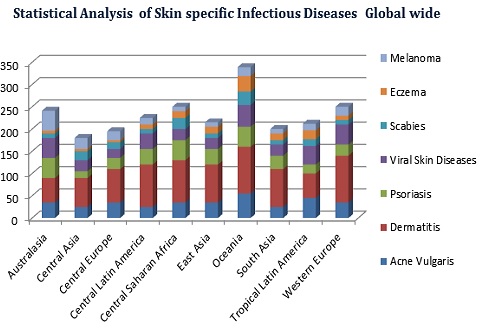
Major Dermatology Universities around the World:
- University of California
- New York University
- University of Michigan Medical School
- Emory University
- Columbia University
- University of Pittsburgh
- Stanford University
- Harvard University
- Thomas Jefferson University
- Johns Hopkins Medical Institutions
- University of California, Berkeley
- University of Chicago
- Yale University
- Duke University
- University of California, Santa Barbara
- Washington University in St Louis

Major Dermatology Associations around the World:
- Asian Dermatological Association Ltd
- Australasian Society for Dermatology Research
- Australasian College of Dermatologist
- British Society of Anti-Ageing Medicine
- British Society for Dermatological Surgery
- British Cosmetic Dermatology Group
- Canadian Dermatology Foundation
- Dermatological Society of Malaysia
- International Society for Dermatologic Surgery
- International Society for Biophysics and Imaging of the Skin
- International Society of Dermatopathology
- European Dermatology Forum Switzerland
- European Society for Cosmetic and Aesthetic Dermatology
- European Society for Dermatological Research
- European Women’s Dermatologic Society
- American Dermatological Association
- American Board of Dermatology Society
- American Society of Dermatology
- American Society of Cosmetic Dermatology & Aesthetic Surgery
- National Dermatology Association
Major Dermatology Socities around the World:
- Dermatology Societies
- Society for Clinical and Medical Hair Removal
- Society of Plastic Surgical Skin Care Specialists
- The Society of Permanent Cosmetic Professionals
- Argentina Society of Dermatology
- Danish Dermatological Society
- French Society of Dermatology
- French Society of Dermatological Research
- German Dermatological Society
- Italian Society of Dermatology
- Japanese Society of Anti-Aging Medicine
- World Trichology Society
- International Society of Hair Restoration Surgery
- New Zealand Dermatological Society
- Turkish Society of Dermatopathology
- American Society for Dermatologic Surgery
- American Society of Dermatology
- American Society for Laser Medicine and Surgery
- Asian Society for Pigment Cell Research
- Australasian Dermatopathology Society
- Brazilian society of Dermatology
- British Society for Dermatological Surgery
- Cosmetic Dermatology Society of India
- European Nail Society
- European society for cosmetic and Aesthetic Dermatology
- International Society for Dermatologic Surgery
- International Society of Dermatology
- International Society for Skin Imaging
- Latin American Paediatric Dermatologic Society

Top Dermatology Hospitals:
- Kubba Clinic
- The Queen Elizabeth Hospital
- Sakra World Hospital
- New York Presbyterian Hospital
- Shanghai Renai Hospital
- London Bridge Hospital
- UCSF Medical Centre
- Rady Children’s Hospital
- Jeanes Hospital
- Al Zahra Hospital Dubai
- Aesthetics International Dubai
- Lifeline Hospitals
- Eternel Medspa
- Cocoona
- Biolite Dubai
- Aesthetic Clinic
- Kaya Clinic
- Manchester Clinic Medspa
- Obagi Medspa
Major Dermatology and Cosmetic related Companies:
- Skin Kind Limited
- Regeneron Pharmaceuticals, Inc
- Dermal Life
- Dermatology Alliance, Patch Testing Centers of Excellence
- Dermatology Associates of Concord
- Galderma
- Johnson & Johnson
- AbbVie
- GSK
- Pfizer
- LEO Pharma
- Apothecus Pharmaceutical Corp
- Remedi Pharmaceuticals
- Abgenix, Inc.
- Abbott Laboratories
- Acadia Pharmaceuticals
- Active Pass Pharmaceuticals
- Advanced Drug Delivery Technologies AG
Related Societies
USA and Canada: American Board of Dermatology; Skin Cancer Foundation; Argentine Society of Dermatology; International Society of Dermatopathology; Canadian Dermatology Association; Primary Care Dermatology Society of Canada; American Society for Dermatologic Surgery; American Society for Laser Medicine and Surgery; Asian Society for Pigment Cell Research; Pan American Society for Pigment Cell Research; Brazilian Society of Dermatology; Latin American Paediatric Dermatologic Society; European Nail Society; Danish Dermatological Society; German Dermatological Society; Italian Society of Surgical Oncology and Oncological Dermatology; Italian Society of Dermatology; French Society of Dermatology; French Society of Dermatological Research; European association of Dermato-oncology; Spanish Academy of Dermatology and Venereology.
Europe: Austrian Society for Dermatology and Venereology; European Nail Society; European society for cosmetic and Aesthetic Dermatology; European Society of Contact Dermatitis; Australasian Dermatopathology Society; Italian Society of Surgical Oncology and Oncological Dermatology; Italian Society of Dermatology; French Society of Dermatology; French Society of Dermatological Research; Finnish Dermatological Society; Australasian Dermatopathology Society; Austrian Society of Dermatology and Venereology; Turkish Society of Dermatopathology; Japanese Society of Anti-Aging Medicine; Cosmetic Dermatology Society of India; Society for Clinical and Medical Hair Removal.
AsiaPacific: Cosmetic Dermatology Society of India; Society for Clinical and Medical Hair Removal; The Society of Permanent Cosmetic Professionals; Society for Cutaneous Ultrastructure Research; Asian Society for Pigment Cell Research; New Zealand Dermatological Society; Asian Dermatological Association Ltd; Korean Dermatological Association; Asian Academy of Dermatology and Venereology; Hong Kong Society of Dermatology and Venereology.
Middle East: The Japanese Dermatological Association; Chinese Society of Dermatology; International Society of Dermatology; Turkish Society of Dermatopathology; Emirates Dermatology Society; Jordanian Society of Dermatology and Venereology; Iranian Society of Dermatology; Israel Society of Dermatology and Venerology; Kuwait Society of Dermatologists; Oman Dermatology Society; Saudi Society of Dermatology and Dermatologic Surgery
Conference Highlights
- Clinical Dermatology & its Therapies
- Pediatric Dermatology
- Cutaneous Conditions
- Plastic and Cosmetic Surgery
- Anti-Aging Treatment
- Acne & Scar Pigmentation
- Psoriasis
- Leprosy and Vitiligo
- Keloid and Pityriasis rosea
- Skin Burns and related Skin Cancers
- Fungal & Bacterial Infections of Skin
- Trichology and Hair Transplantation
- Laser Treatment Trends
- Natural Approaches to Skin & Hair
- Prevention & Treatment of Skin & Body
- Skin Rejuvenation & Resurfacing Therapy
- Stem Cell Therapy on Skin
- Skin Care & Nutritious Diet
- Current Trends in Dermatology
- Aesthetic Medicine
To share your views and research, please click here to register for the Conference.
To Collaborate Scientific Professionals around the World
| Conference Date | November 21-22, 2019 | ||
| Sponsors & Exhibitors |
|
||
| Speaker Opportunity Closed | |||
| Poster Opportunity Closed | Click Here to View | ||
Useful Links
Special Issues
All accepted abstracts will be published in respective Our International Journals.
- Journal of Clinical & Experimental Dermatology Research
- Journal of Cosmetology & Trichology
- Dermatology and Dermatologic Diseases
Abstracts will be provided with Digital Object Identifier by











